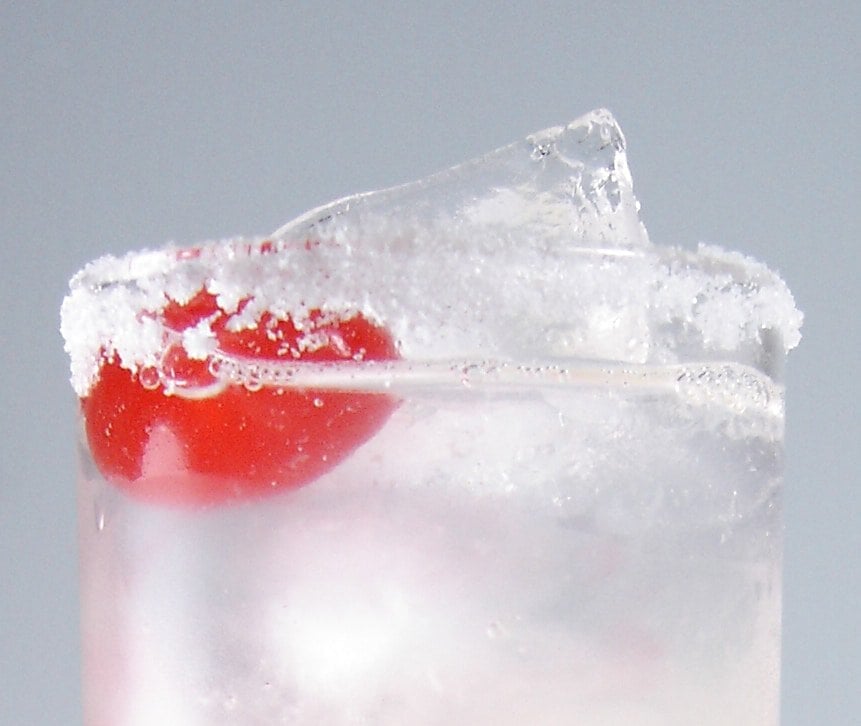In part one we looked at the Laws of Sympathetic Magic—Contagion and Similarity—and explained how they represent the sometimes illogical aspect of human nature. In this post I’ll expand on how these two laws influence human behaviour and how certain actions trigger emotional responses based on magical thinking. Many of the concepts aren’t necessarily new to anyone in the business, but this post may help explain why many restaurants enforce certain things among their staff. If you haven’t read Part I, I’d recommend you read it to get up to speed.
One of the key concepts of magical thinking is Incorporation. The term “;you are what you eat” can be considered a good representation of the idea and a statement everyone has heard. Incorporation is also related to one of the key emotions related to consumption, disgust. Prior to insightful scientific knowledge, early man had no concept of digestion and they came to believe that what they put into out body would influence their outward appearance and behaviour. This guided a lot of food and drink choices and helped to develop a very early concept of finest, premium and rare denotations.
Other phrases capture the essence of “;Incorporation Into the Self” like; “;you body is a temple” and “;garbage in, garbage out”. The basic idea is that what we incorporate into our diet has a direct effect on our being. This holds true for logical consumption issues, like a balanced diet, unwanted weight gain and selection of nutritious foods. But, Incorporation also has some less logical aspects that relate to rejection and disgust of food and drink.
The idea of “;self” is a complex psychological and philosophical study, but for our purpose of understanding Incorporation we will look at how we incorporate things into our being. The most obvious method would be with our mouth.
Cannibalism is considered disgusting to the vast majority of cultures. The rare occurrences are usually deranged individuals, however some groups continue to practice this dark ritual. Religious sects, like the Aghori, believe that eating a part of another human is a method of incorporating the traits and memories into their own self-embodiment. Even though cannibalism is something we find revolting, the idea of incorporating the characteristics of particular animals, or part there of, is still widely practised. This practice is contrary to our natural instincts, but the Laws of Sympathetic Magic were created because humans are not necessarily logical.
Disgust is more likely to be expressed when a person is presented with animal type foods or drinks, hence why meat-tales are relatively rare. Plant based foods rarely ever elicit a disgust response, but are frequently considered distasteful. The general theory on why animal based drinks can be considered disgusting is because animals remind us of ourselves. Just think of a baby Harp Seal head garnish on a drink, with those big brown eye’s staring at you. It is also thought that animal based foods present potential dangers, such as disease, so evolution has gently nudged us away from these food choices.
Faeces, mucus and rotting flesh are almost universal disgust objects and are all animal based. Contamination of a drink with any of these will quickly draw the good-times to a close. This is the reason bandaids and scabs in drinks are repulsive to even the most steeled individuals. Also, boogers and not washing you hands in the washroom will stop people from ordering food and drink from your establishment. It’s an evolutionary protection mechanism that we have very little control over.
Even though animals are the focus of disgust, humans have come up with clever ways to hide this fact. Most of our meals are prepared in a way that hides the nature of the animal. We use stews and crusts to cover up the animalness, or at least make it less recognizable. Cooking meats changes the natural colour of the meat into a less animalistic appearance. In drinks there are a few examples, like shrimp garnishes. To conceal the fact that shrimp are sea-bugs, we remove their carapace and cook them. More importantly, the digestive track of the shrimp is removed through a process called de-veining. Even that term is designed to mislead a person from the truth. I assume I don’t need to explain that. Try garnishing your next Caesar or Bloody Mary with an unshelled shrimp and see what happens.
In Western culture almost all animals are considered disgusting. This is reflected by the fact that the total number of animals consumed is very small compared to the number available. For example most restaurant menu’s have a very limited selection of animals on their menu and it can usually be refined to poultry, beef, pork, fish, lamb. Certain crustaceans are acceptable, like shrimp, crab and lobster, but beyond that most are viewed as unacceptable, yet there are tens of thousands of different animals available.
The emotion of disgust can be flexible, depending on the context and the idea of Incorporation. Parents of small children do not have the same reaction to their babies faeces as they would to a grimy hobo who used their garden as a lavatory.
Contamination
Contamination is the core of disgust. The idea that something will pollute you, through associated contact, is the primary belief. The vehicle for this transmission is an “essence” (usually a product of animate entities), which contains the essential properties of the host and can be transmitted by contact. It’s a fancy term for cooties. If something repulsive touches something benign, the latter, even if it’s physically unchanged, becomes “infected.” If the filthy hobo comes into a bar and sits in a booth, has a drink and leaves, a person that witnesses this is less likely to sit in that booth.
So what does this have to do with beverage service? Lots actually. Here are a few examples:
Appearance
People are more likely to stay at a bar with well-groomed wait staff because they are far less likely to “;contaminate” the food with cooties. Basically, that feeling of disgust won’t be evoked as easily.
Handwashing
Bartenders have one of the more difficult tasks in the food and beverage industry since everything they do is under the watchful eye of the customer. One of the more off putting things a bartender can do is pick up used glassware, by the rim, with their fingers. Obviously this is a direct connection to another persons mouth. If the bartender proceeds to make another round of drinks, without washing, this can be viewed in an extremely negative manner because of the concept of contamination and incorporation.
For people who handle food and beverages, it is important to remember to avoid touching your nose, mouth and scratching certain “;areas”. Don’t pickup glassware by the rim or pull garbage out of the sink with your bare hands. It may seem routine to you, but most people are disgusted by these actions. The reality is that picking up glasses in this manner is unlikely to transmit disease, it could, but not likely.
If you must scratch or touch, make a pronounced and obvious display of thorough hand washing afterwards. Don’t lean over the sink and hide the fact that you are washing your hands, bring your soap covered mitts to the height of your chest and do a deliberate scrub. This accomplishes two things. The first being that you are actually cleaning your hands properly, secondly, even though it may seem awkward at first, it will send a message to everyone within visual range that you are clean and won’t contaminate their cocktails or food. This creates a sense of comfort for people and makes you look like a professional. This really does work.
Cleanliness
Evolution has allowed disgust to branch out from food. We know that certain environmental conditions, like unsanitary areas, and uncontrolled pest populations, can invoke the disgust response. This has a direct relation to a restaurants sales. One area that has been getting significant attention lately is the quality and condition of bathrooms in the dining establishment. It doesn’t matter how clean the rest of the area is, if the bathroom is foul, people are not going to return. And for God’s sake, never, ever let a customer see the “;staff” bathroom.
Vermin can generate devastating levels of disgust. If a restaurant is found to have rats, it is rare for that business to survive. The idea of contamination can even carry over to any new restaurant opening up in the space. The powerful nature of disgust can generate long term memories that stay beyond the realm of logic.
Wild animals are a rare occurrence in restaurants, but insects like fruit flies are very common. These little pests hitchhike on the fruit and vegetables used in the restaurant. They don’t present a problem until they find a regular source of food and begin to breed. Once fruit flies are established they become very difficult to contain, but it is possible. Luckily, people don’t view fruit flies with the same level of disgust as other insects like the common fly and cockroaches. It’s still a good idea to avoid any plague of pests though.
The best way to deal with any infestation is to remove the food that is attracting them. Cleanliness is the key.
In the next post we’ll look at Transvaluation (Positive Contamination) which is a really big concept in the bar and spirit world. Ever wonder why clubs pay celeberties, like Paris Hilton, to grace their opening events? It’s due to Transvaluation and it’s something you can harvest, even on a small scale.




